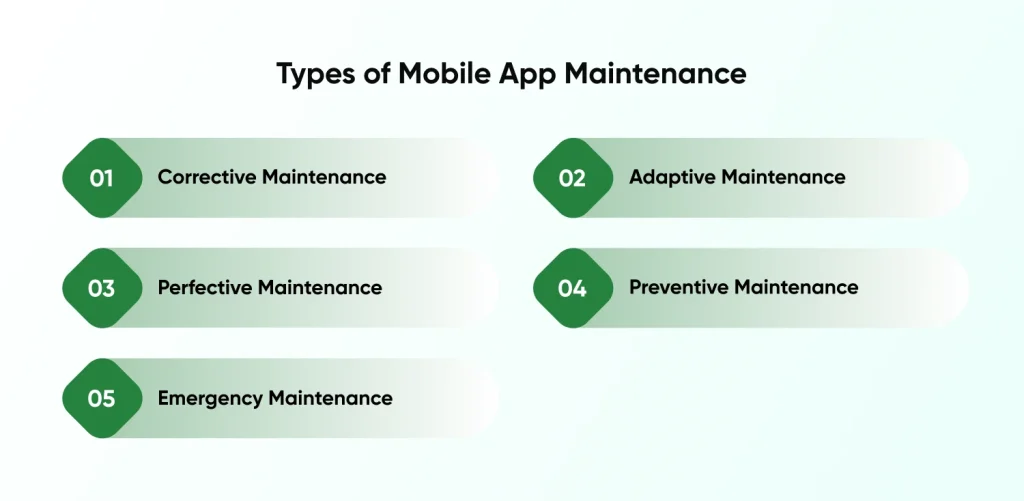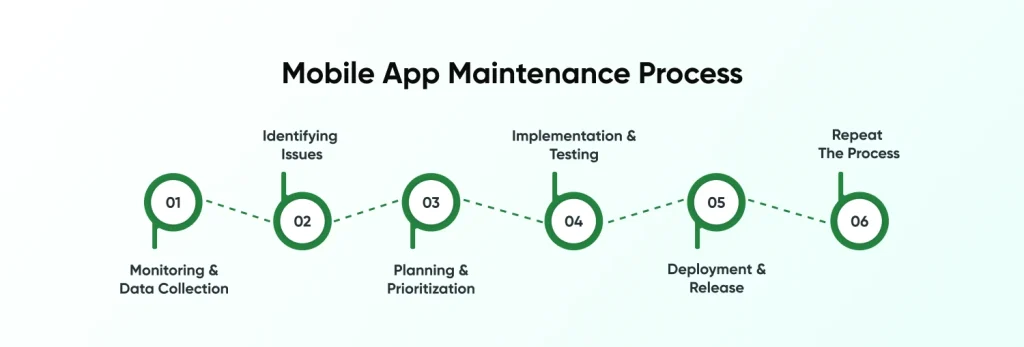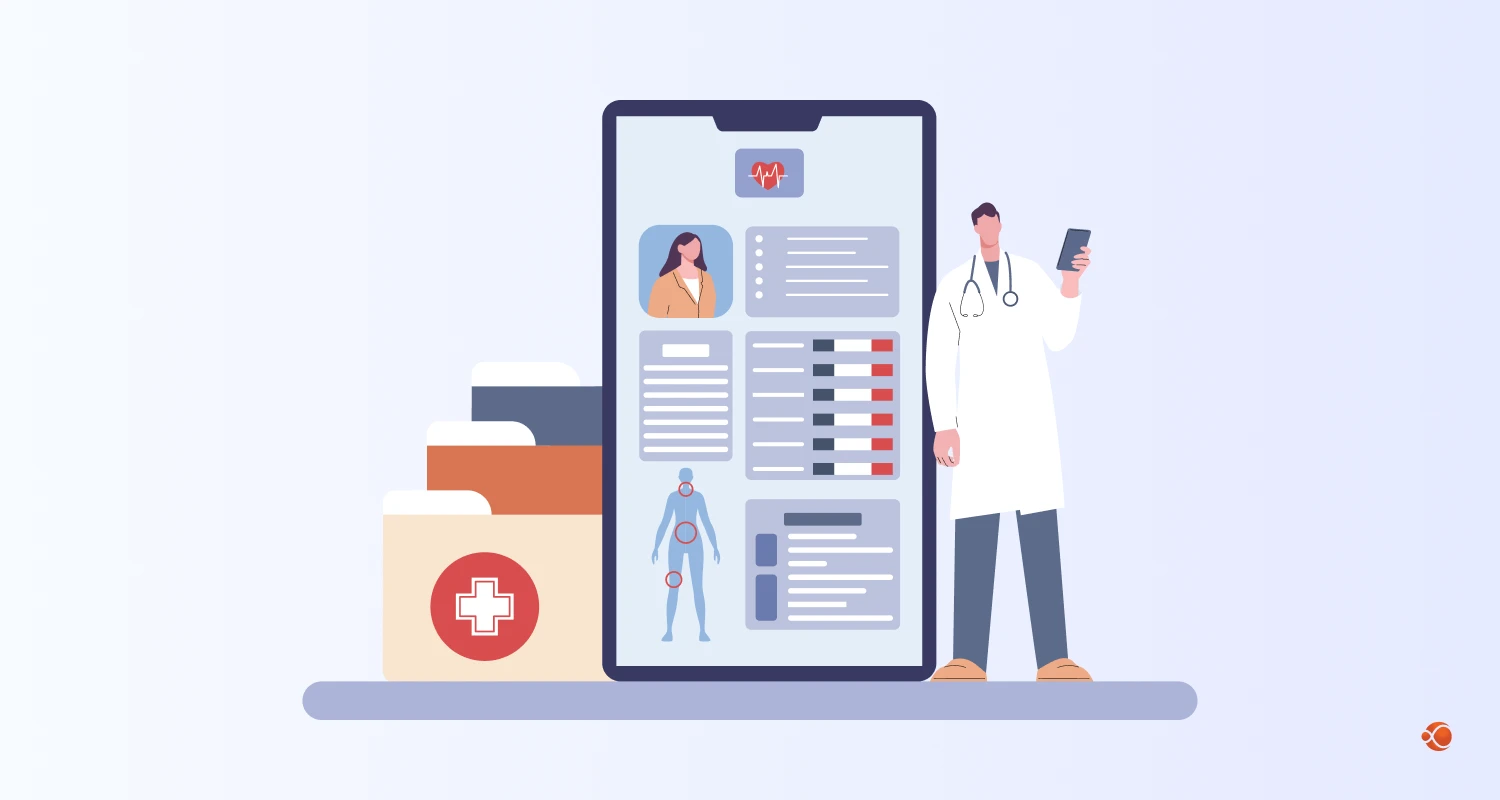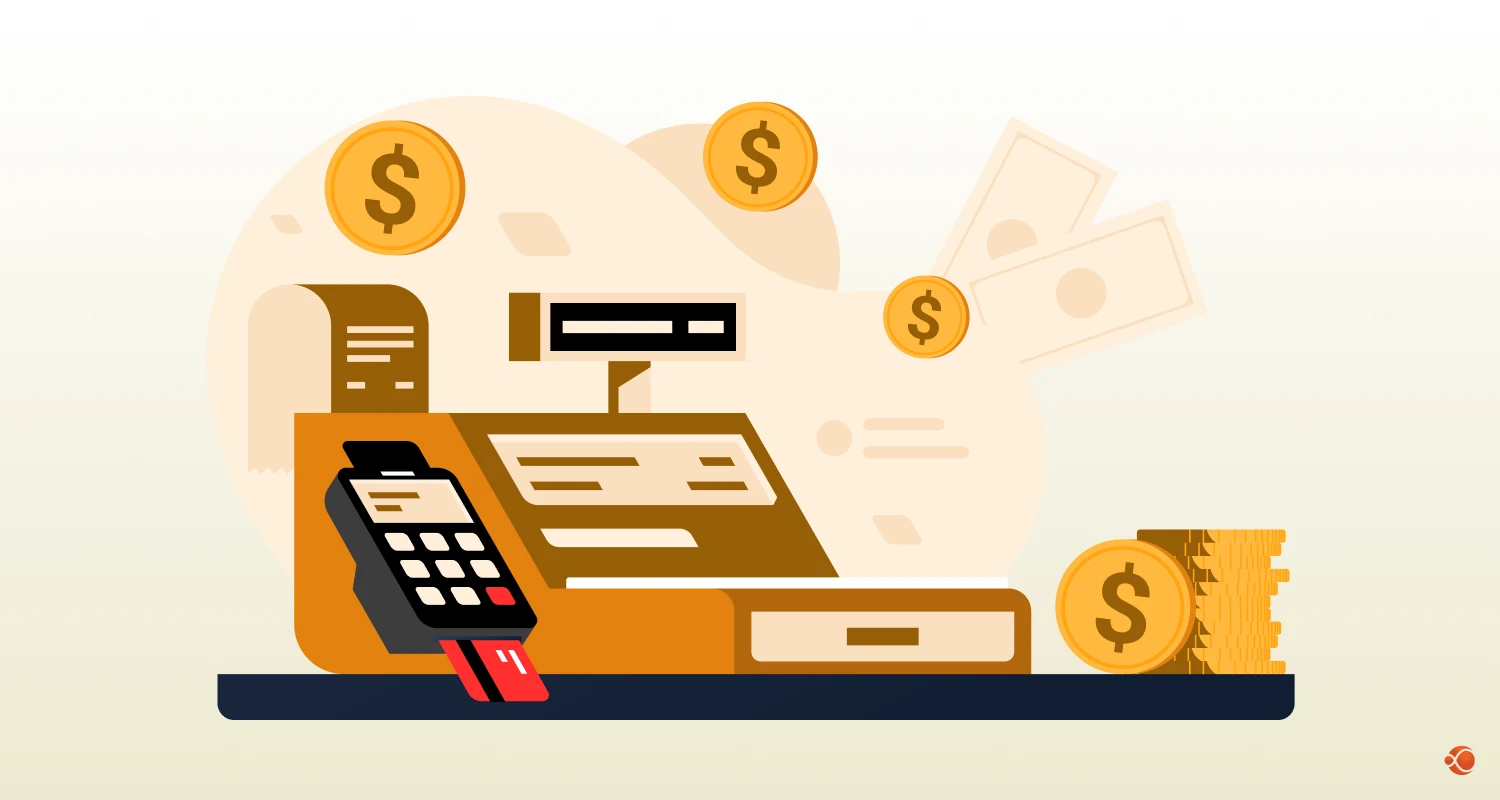Quick Summary: Launching your app is just the starting point, keeping it alive is the real challenge. Mobile app maintenance ensures security, smooth performance, and competitiveness while reducing long-term costs. Without it, even the best apps risk fading fast.
You’ve done it, you’ve launched your app. The initial excitement is buzzing, downloads are coming in, and the team is celebrating. But what happens after the celebration settles? This is where the real work begins. While the initial development gets all the victory, the ongoing success of any mobile app is almost entirely dependent on one thing: a well-executed mobile app maintenance strategy.
Without it, even the most innovative app will eventually wither and fade. Think about your own phone. How many apps have you downloaded, used once, and never opened again because of a glitch, an outdated feel, or a slow loading time? You’re not alone. Google has decided to remove nearly 900,000 apps which have been abandoned from the Play Store. Google and Apple both unveiled measures to address abandoned apps or those that have not been updated in two years. In Google’s case, that amounts to 869,000 apps, while Apple has some 650,000.
This blog will break down exactly what mobile app maintenance is, why it’s so important, the different types of upkeep, the typical process, and, most importantly, the honest truth about mobile app maintenance costs.
What is Mobile App Maintenance?
At its core, mobile app maintenance is the set of activities required to keep an application relevant, functional, and secure after its initial release.
Mobile app maintenance is all about continuous support and care to keep it from becoming outdated. Think of it like owning a car; you wouldn’t buy one and then skip oil changes, tire rotations, or fluid checks. If you did, the engine would eventually fail and leave you stuck.
The same goes for your app. It’s not just about fixing problems when they pop up; it’s about keeping everything running smoothly so it continues to serve users reliably. A complete mobile app development company involves a mix of tasks, from squashing bugs to adding new features and ensuring the app stays compatible with the constantly changing landscape of devices and operating systems.
Why Mobile App Maintenance Matters
Ignoring ongoing maintenance is one of the quickest ways to see your investment disappear. Here’s a look at the key reasons why a dedicated mobile app maintenance plan is a must-have, not a nice-to-have.
Keeps Your App Secure
Cyber threats are always changing. A forgotten app is a vulnerable app. Security patches and regular updates are vital to protecting user data and preventing security breaches. This is especially true for maintenance apps for Android and iOS that handle sensitive information like user logins or payment details. A data breach can destroy user trust and your brand reputation.
Ensures a Great User Experience
User expectations are high; they want an app that is fast, reliable, and easy to use. Bugs, crashes, or slow performance can quickly lead to frustrated users and a wave of negative reviews. A consistent app maintenance and support schedule allows you to address these issues promptly, keeping users happy and engaged.
Adapts to a Changing World
The mobile technology world moves at a dizzying pace. New devices are released, and operating systems like iOS and Android are updated multiple times a year. Your app needs to be ready for these changes. Without adaptive maintenance, your app could become incompatible with the latest phones or software, causing it to crash or simply not work for a growing number of your users.
Stays Competitive in The Market
Your competitors aren’t standing still. To keep users from moving to another app, you need to provide new features and improvements. A good maintenance plan includes the strategic addition of features based on market trends and user feedback. It’s how you stay relevant and grow your audience.
Reduces Long-Term Costs
It may sound counterintuitive, but consistent, proactive maintenance actually saves money. Catching small bugs before they become major problems is far more cost-effective than an emergency fix. It prevents the need for a costly, complete overhaul down the line. To address these areas effectively, many companies prefer to hire mobile app developers with ongoing support expertise.
What are the 5 Types of Mobile App Maintenance?

Corrective Maintenance
This is the most reactive form of maintenance. It involves fixing issues that users have reported, such as bugs, crashes, or broken links. While important, the goal is to minimize the need for this type of work by being more proactive.
Adaptive Maintenance
This is all about keeping your app current. It includes updating the app to work with new versions of (OS) operating systems (like Android and iOS), new devices, or changes to third-party services and APIs.
Perfective Maintenance
This type of maintenance focuses on improving the app’s performance and functionality. It could include optimizing the app’s code to make it faster, adding new features to make the app more useful and engaging, or improving the user interface based on feedback.
Preventive Maintenance
This is the proactive work that helps prevent future problems. It involves things like refactoring code to improve its quality and stability, updating libraries and tools before they become outdated, and preparing the app for future changes.
Emergency Maintenance
This is a specific, critical type of corrective maintenance that is only performed when an app is facing a major, unforeseen failure. This could be a complete app outage, a bug that is causing massive data corruption, or a critical security breach. In each of these cases, mobile app testing services play a vital role in validating fixes before public release.
What Is the Step-By-Step Mobile App Maintenance Process?

A successful maintenance strategy follows a clear, repeatable process. While it can change between different mobile app maintenance companies, specific key steps are generally the same:
Step-1: Monitoring & Data Collection
Maintaining an application starts with closely monitoring its performance. This involves identifying crash reports, analyzing download patterns, tracking user feedback, and evaluating overall functionality to ensure the app continues to deliver a reliable and smooth experience. With tools such as Firebase and Google Analytics, you can gather these insights and see how people are really using your app day to day. This step is key to building a clear idea of what’s working well and where improvements are needed.
Step-2: Identifying Issues
The data collected in the first step is analyzed to find bugs, areas for improvement, and performance issues. User reviews and direct feedback are also a rich source of insight. The goal here is to translate raw data into actionable items, pinpointing specific issues that need to be addressed.
Step-3: Planning & Prioritization
Once issues are identified, they are prioritized. Critical bugs that impact core functionality and security are addressed first. Performance optimizations and feature requests are then scheduled based on their potential to improve the user experience and business goals. Professional application maintenance services understand how to balance urgent fixes with long-term improvements.
Step-4: Implementation & Testing
The development team works to fix bugs, add new features, and implement changes. After the changes are made, they are thoroughly tested by a Quality Assurance(QA) team to make sure everything works as expected and no new problems have been created. This rigorous stage is essential to prevent new issues from being introduced into the live version of the app.
Step-5: Deployment & Release
The updated version of the app is then released to the app stores. Communication is key here, so that users get to know what has been fixed and which new features they can enjoy. A smooth deployment process minimizes downtime and ensures that the new version is available to users as quickly as possible.
Step-6: Repeat The Process
The process starts all over again. The cycle of monitoring, analysis, planning, and implementation is continuous, ensuring the app remains in top condition. This constant loop is what makes the app a living product that evolves and improves over time.

How Much Does Mobile App Maintenance Cost?
This is often the most pressing question for business owners. The cost of app maintenance is not a fixed number and can vary widely. A general rule of thumb in the technology industry is that annual app maintenance costs are about 15-20% of the initial development cost. However, this can change based on several key factors:
- App Complexity: A simple app with limited features will have lower maintenance costs than a complex one with integrations, databases, and extensive functionality.
- Number of Features: More features mean more code to manage, which in turn increases the potential for bugs and the need for updates.
- Platform: The cost can also depend on whether your app is native to Android or iOS. If it’s a cross-platform solution, it’s often best to seek help from cross-platform app development services.
- Frequency of Updates: If you plan on releasing frequent new features and updates to stay competitive, your costs will be higher.
- Who Does the Work: The hourly rate for a developer or a mobile app maintenance company can vary depending on the expertise and location.
| Cost Component | Estimated Monthly Cost (USD) | Estimated Annual Cost (USD) |
| Bug Fixes & Performance | $1,000 – $3,000 | $12,000 – $36,000 |
| Server & Hosting Fees | $200 – $1,500 | $2,400 – $18,000 |
| Security Updates | $500 – $2,000 | $6,000 – $24,000 |
| Third-Party Service Fees | $100 – $1,000+ | $1,200 – $12,000+ |
| Platform-Specific Updates | $500 – $2,500 | $6,000 – $30,000 |
| New Feature Development | Varies widely, project-based | Varies widely, project-based |
| App Store Fees | Varies, one-time or annual | Apple: $99/year, Google: $25 one-time |
App Maintenance Costs Breakdown
Developer Time
The cost covers the time spent by developers making updates, fixing bugs, and building out new features to keep the app running smoothly.
Server and Hosting Costs
The server and hosting costs are ongoing expenses for running your app’s backend and ensuring it stays online and responsive.
Third-Party Services
Including costs for any external tools or APIs your app relies on, such as push notifications, payment gateways, or analytics platforms.
App Store Fees
The annual charges required to maintain developer accounts on online storefronts like the Apple App Store and Google Play Store. For many businesses, especially those with an existing iPhone app development pipeline, costs can rise higher due to Apple’s frequent iOS updates and strict app approval process. Factoring these requirements into your budget early can prevent unwelcome surprises.
Mobile App Maintenance Best Practices
Now that you understand the what and the why, here are some app maintenance best practices to help you stay ahead of the game.
Treat it as an Investment, Not an Expense
Don’t think of maintenance as a drain on resources. It’s a strategic investment that protects your initial development cost and ensures the app’s long-term success.
Budget for It from the Start
Allocate a specific budget for maintenance when you first plan your app. This prevents a scramble for funds after launch and allows for a more consistent schedule.
Listen to Your Users
Pay attention to app reviews and direct feedback. Your users will tell you exactly what’s working and what isn’t. Responding to their needs shows them you care and builds loyalty.
Monitor Performance Proactively
Use performance monitoring tools to identify and address the issues before they cause a problem for a large number of people. Don’t wait for users to report a bug.
Regularly Update Third-Party Services
Many apps rely on third-party APIs. To keep these services updated to avoid any compatibility issues and security vulnerabilities. A single outdated library can put your entire app at risk.
Work with a Trusted Mobile App Maintenance Company
If you don’t have an in-house team, finding a reliable mobile app maintenance company is key. Look for a partner with a strong track record and a clear understanding of the full maintenance lifecycle.
Why Choose CMARIX for Your Mobile App Maintenance?
Proven Expertise
CMARIX has years of experience in Android and iOS maintenance, staying current with platform updates and device compatibility requirements. Our development team understands the unique challenges of each platform and make sure smooth performance across all devices. Whether you need comprehensive Android app development services or iOS-specific maintenance, we have the expertise to keep your app running at peak performance.
Proactive Approach
We monitor performance continuously and fix issues before they actually impact the users, preventing costly emergency repairs. This preventive strategy saves you time, money, and protects your app’s reputation in the long run.
Comprehensive Services
Complete post-launch support, including security updates, performance optimization, bug fixes, and feature enhancements. Whether you need corrective, adaptive, or preventive maintenance, we handle all aspects of app upkeep.
Cost-Effective Solutions
Flexible pricing models and transparent costs that maximize your maintenance investment value. Our efficient processes ensure predictable budgets while delivering maximum return on your maintenance spend.
Final Words
Launching a mobile app is only the starting phase of the journey. True success comes with how well it lasts and continues to meet users’ needs over time. That’s why mobile app maintenance isn’t just an option anymore; it’s important for any business that wants to stay strong in the digital space. The mobile app development process doesn’t end at launch; it evolves into an ongoing cycle of improvement and adaptation. By understanding the different types of upkeep, budgeting for the cost of app maintenance, and following the best practices of app maintenance, you can make sure your app not only survives but also thrives for years to come.
FAQs for Mobile App Maintenance Cost
Why Is Mobile App Maintenance Important for Businesses?
Mobile app maintenance is important for businesses as it ensures the long-term success, relevance, and security of their application. A well-maintained app protects the initial investment by preventing a decline in user engagement and performance, and it helps the business stay competitive by adapting to changes in the market and technology. Without it, a business risks losing users, suffering from negative reviews, and having its app become obsolete.
What Are the Common Types of App Maintenance?
There are five common types of app maintenance: Corrective maintenance fixes bugs, adaptive maintenance ensures compatibility with new software, and perfective maintenance improves performance and adds new features. Preventive maintenance is proactive, and emergency maintenance is for critical, immediate failures.
How Can App Maintenance Improve User Experience?
App maintenance directly improves the user experience by addressing issues that cause frustration and dissatisfaction. By regularly fixing bugs and optimizing performance, your app becomes more reliable and faster, while adding new features keeps it fresh and engaging, leading to higher retention rates and positive reviews.
How Long Should App Maintenance Continue After Launch?
App maintenance should continue indefinitely after the app’s launch. As long as the app is available and used by people, it will need maintenance to address new operating system updates, security threats, and evolving user expectations.
Can I Maintain My App In-House, or Should I Hire a Service?
You can maintain your app in-house if you have a dedicated and skilled development team. However, hiring a specialized mobile app maintenance company can be a more cost-effective option for many businesses, as it provides expert support without the overhead of a full-time employee.







